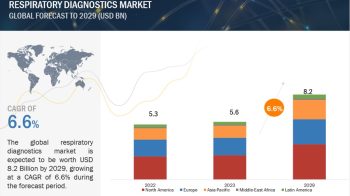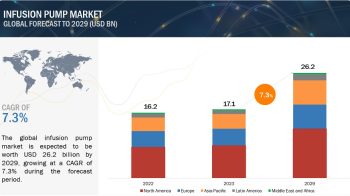Mice models are indispensable to research activities dealing with human disease processes, due to striking similarities between the anatomy, physiology, and genetics of humans and mice. These advantages promote scientific discovery, understanding of the functions of individual genes, mechanisms of different diseases, and the effectiveness and toxicities of various drug molecules. Mice models are the most popularly used animal models due to their small size, short generation time, accelerated lifespan, low cost, and requirement of less space. These factors help in accelerating the research and development of drug therapies. By type, the mice model market is categorized into inbred mice, genetically engineered mice, conditioned/surgically modified mice, hybrid/congenic mice, outbred mice, and spontaneous mutant mice.
Growth in the mice model market is likely to be centered in Asia-Pacific. Growth in the Asia-Pacific region can be attributed to the less stringent regulations on the use of animal models for research in Asia as compared to Europe and the U.S. The rising focus on personalized medicine in China, international alliances for R&D activities in China, growth in regenerative medicine, biomedical, and medical research in Japan, growing presence of global players, development of bioclusters to boost the biotechnology industry in India, ongoing biomedical research activities in Australia, rising translational and biomedical research in Singapore, increase in animal research in Malaysia, and rising pharmaceutical and biotechnology R&D activities in South Korea are some of the other factors that help the growth of this market in Asia-Pacific.
The emphasis on personalized medicine, novel therapies, biomarkers, and companion diagnostics in the Chinese biopharmaceuticals industry has grown. In addition, the significance of China’s R&D capabilities has become increasingly important as an emerging force in the globalization of pharmaceutical R&D, thus fuelling the use of mice models. Cost savings and the less stringent regulations have been one of the most important drivers to outsource preclinical activities in China. Sponsors save about 30%-35% on the preclinical trial of a drug under investigation. The Chinese market is witnessing a growing influx of various pharmaceutical companies and mice model suppliers. For instance, in December 2016, Harbour BioMed (China) acquired Harbour Antibodies BV (Netherlands) to create a new, global oncology-focused biotechnology company. The acquisition enabled the company to use Harbour Antibodies’ patented transgenic mouse platforms to build an internal portfolio of next generation therapeutic antibodies for cancer. Moreover, through the 13th Five-Year Plan (2016-2020), China is focusing on innovation as the primary driver of economic development. China aims at boosting scientific innovation and increasing R&D/GDP ratio to 2.5% by 2020 (2.1% in 2015).
Japan has been a leading market in the life sciences industry; various governments and research institutes in Japan also contribute to the growth in biomedical research. The Japan Society for the Promotion of Science and the Tokyo Biochemical Research Institute are among the prominent institutes that provide grants for biomedical research. In April 2016, Japan compiled its 5th Science and Technology Basic Plan (2016-2020) to give a boost to research and innovation. The Japanese government also plans to expand the life sciences market by approximately 30% by 2020. Japan currently has a number of different organizations that conduct biomedical research, including the National Hospital Organization (NHO), National Institute of Radiological Science (NIRS) and National Institute of Biomedical Innovation (NIBIO). Moreover, Japan has also partnered with countries like Russia, India, the U.K., and others to jointly undertake biomedical research which is boosting the demand for research activities and the usage of mice models. In addition to this, the rising investments in the field of regenerative medicine in Japan also favor the growth of the mice model market.
The factors driving the growth of the Indian market are the development of bioclusters, growing presence of global players, and the rising R&D activities by pharmaceutical companies. In addition to this, Australia has been actively conducting biomedical research projects over the years. These projects make extensive use of animal models for the discovery, development, and commercialization of antibody-based medicines, thereby being a growth factor for the mice model market. Similarly, the heavy investments in translational and biomedical research that involves preclinical tasks encompassing animal testing resulted in the growth of the market for mice models in Singapore.

